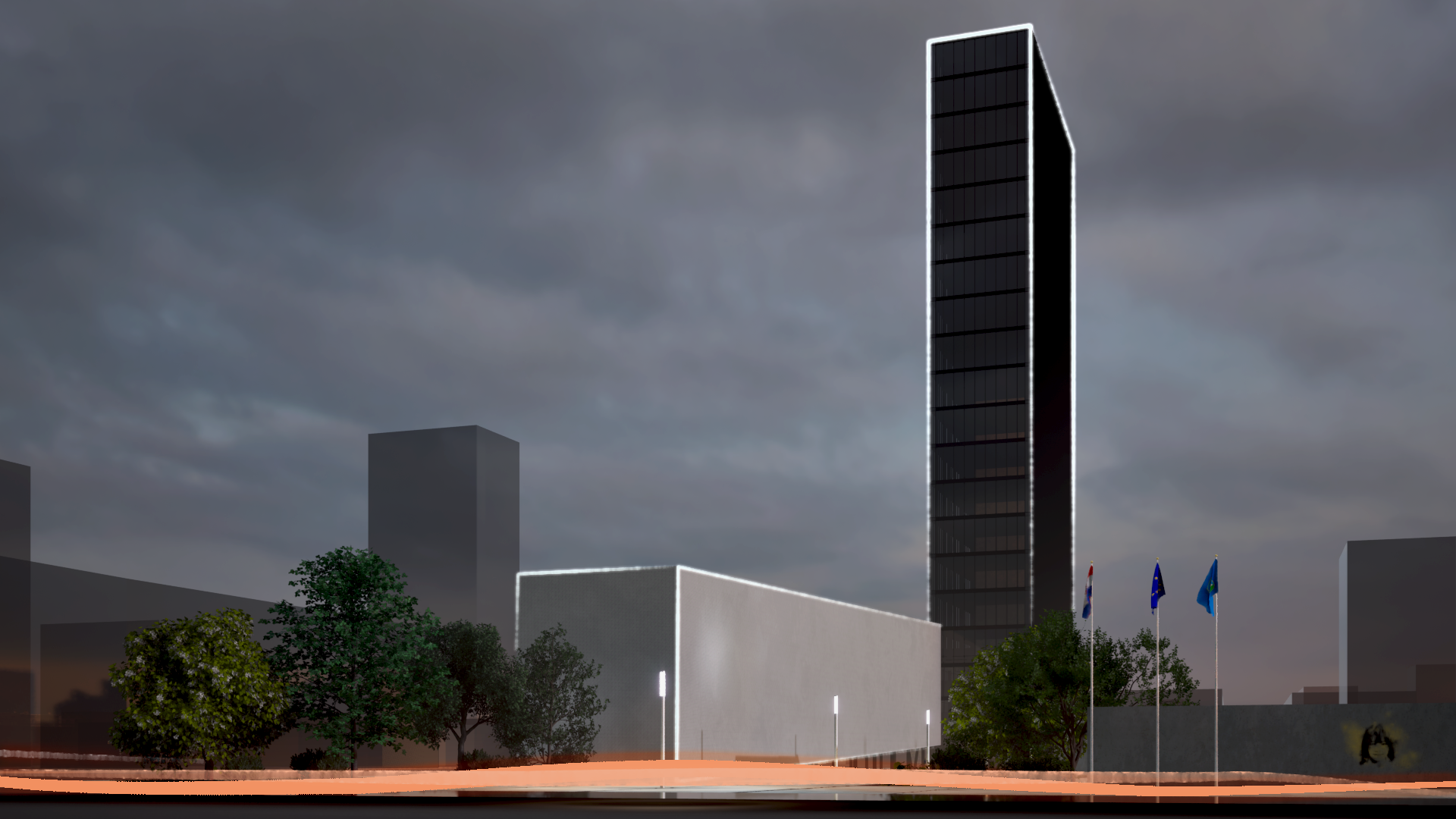
Location: Špansko, Zagreb, Croatia
Year: 2025
Status: Collaborative student project


Architecture of a Computer
The complex is composed of two primary elements: a long, low-rise volume housing the data center, and a high-rise tower containing office spaces for programmers who rely on the server infrastructure, as well as an educational center for training. At their junction is the main entrance with shared public spaces. The building’s functions can be metaphorically divided into the CPU (data center), User Interface (office spaces), and the input/output zone—where untrained citizens marginalized by rapid technological change enter and exit equipped with the skills needed to remain competitive in the job market.


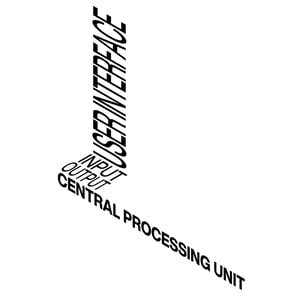

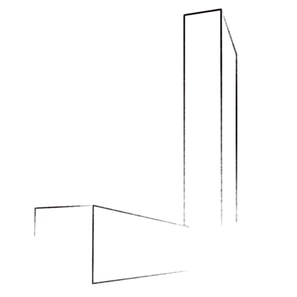

Architecture of a System
Internally, the building is organized as a system of interconnected components: the lower volume hosts the data center, the tower contains workspaces, educational facilities, a café, and a fitness center at the top. The shared zone between the two features a reception area, café, restaurant, library, conference center, and access to a showspace gallery that spans above the server room—offering visitors a rare glimpse into the hidden world behind the user interface of "black box" technologies.
Architecture of Emotions
A long, gentle ramp leads toward the entrance, set in the opposite direction of the data center’s descending volume, creating a gravitational pull toward the tower. The tower itself, tall and slender, asserts a commanding, almost intimidating presence. Both volumes are wrapped in homogeneous façades, revealing little about the interior, evoking mystery and a sense of the unknown. This architectural language, simultaneously alluring and unsettling, mirrors the emotions society feels in the face of the disruptive transformations brought by emerging technologies.
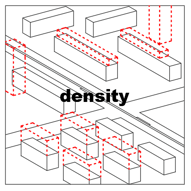
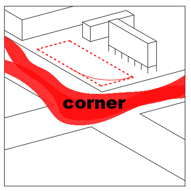
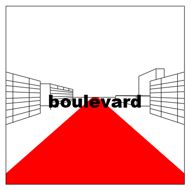
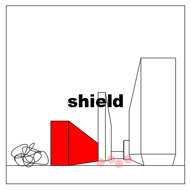
Site-Driven Design Prenciples

Relationship with the city
Urban Vision
Zagreb suffers from low urban density, leading to car-dependent development and insufficient public transport and services. Although the Vukovarska corridor is well-equipped with infrastructure, illegal construction has kept density suboptimal. For this reason, the proposal advocates building a high-rise tower on this site, reflecting the building’s social significance. The goal is to normalize the presence of tall buildings in this area—distant enough from the historic center, yet close enough to remain central and well-connected.
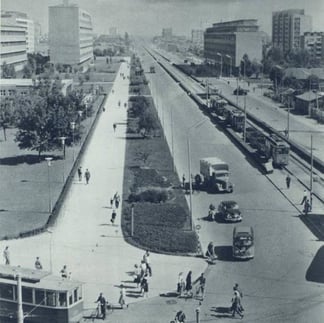

Vukovarska Street (1950s)
Relationship with the street
Originally named Moscow Boulevard, Vukovarska Street was designed as a modernist corridor—wide, structured, and lined with pilotis buildings in Le Corbusier’s style. Over time, uncoordinated additions and unregulated family homes eroded its character, creating a fragmented and transitional space with little urban identity. The proposed building aims to restore urban quality by framing a public plaza—open and permeable thanks to its partial elevation above ground. To respect the original boulevard rhythm, the tower is placed in the background, while the elongated base remains visually dominant from the street.
Sections

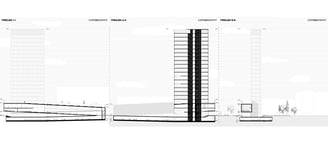
Facades


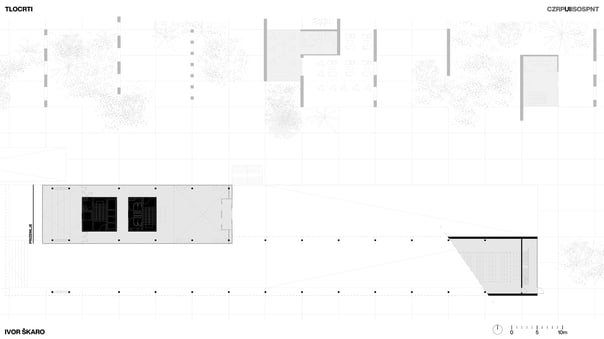
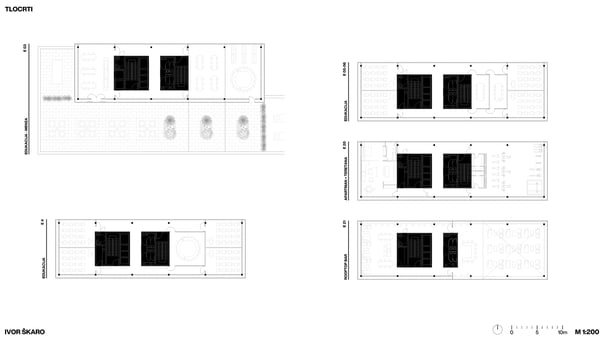
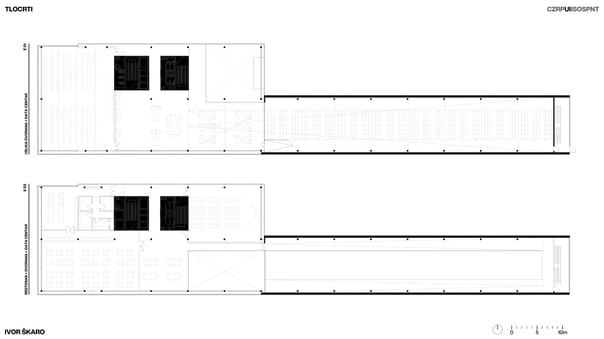
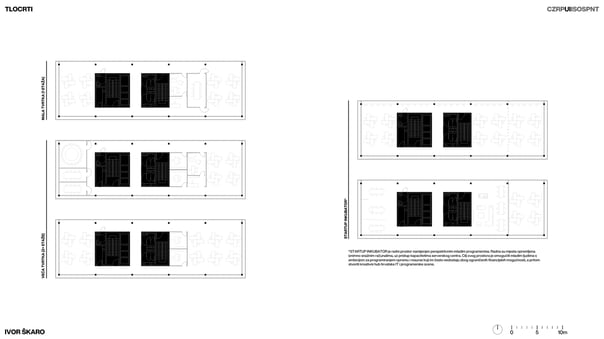




Plans
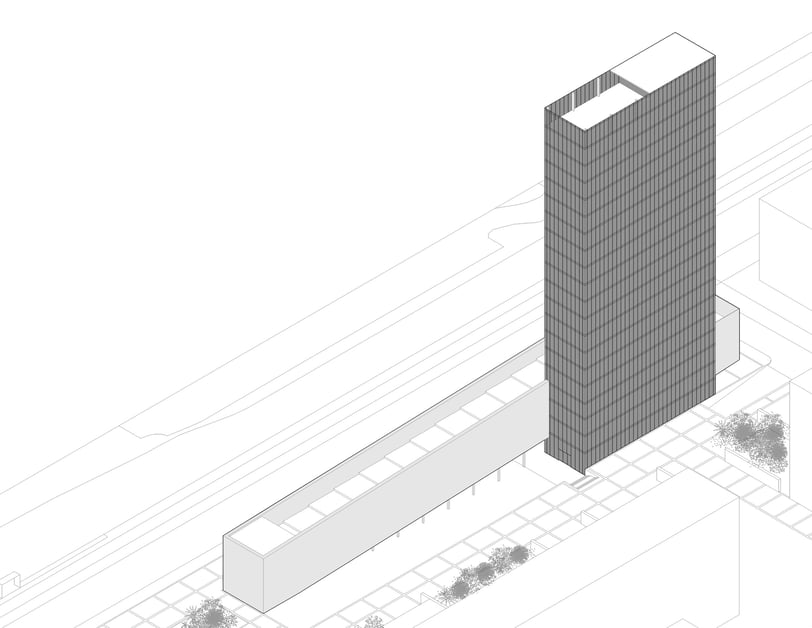

Axonometric view
iskaro@arhitekt.hr
+385 95 383 0420
© 2024. All rights reserved.
Ivor